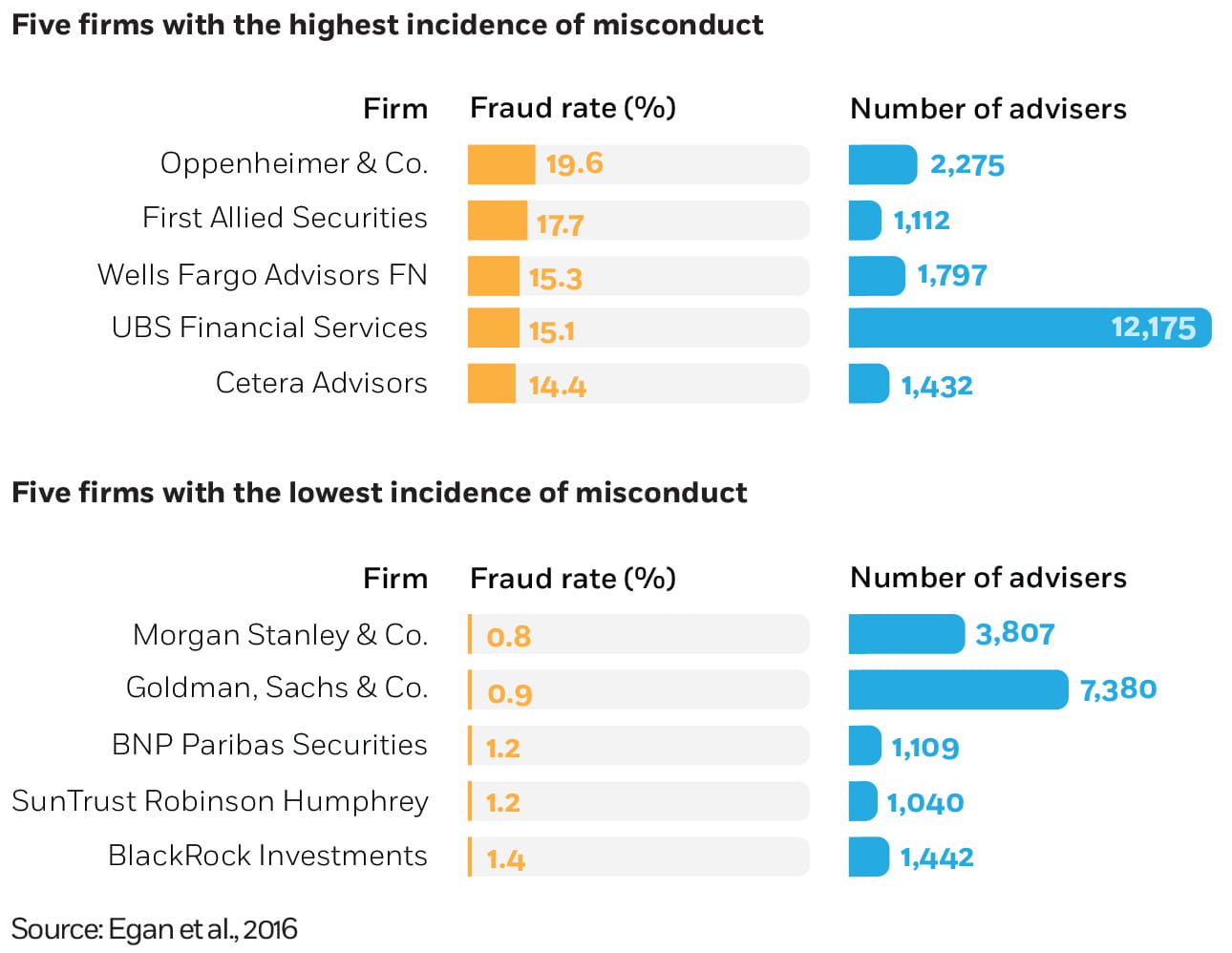
Conventional Wisdom: Is the Modern Economy Morally Flawed?
The candidates of both major parties agree that something about the US economy is awry.
Conventional Wisdom: Is the Modern Economy Morally Flawed?In the first large-scale study documenting the economy-wide extent of misconduct among financial advisers and financial advisory firms in the United States, researchers find that most financial advisers who engage in misconduct get to keep their jobs—or are quickly rehired by another firm in the industry.

The candidates of both major parties agree that something about the US economy is awry.
Conventional Wisdom: Is the Modern Economy Morally Flawed?
Mexico and Australia both reformed their social security programs, with very different results. The US and other countries can learn from what worked and what failed.
Can We Save Retirement?
Under the surface, there are rules that govern power sharing among rival factions and keep high-ranking individuals moving up the ladder.
An Economic Model Decodes the Chinese Communist PartySome of the largest financial advisory firms in the US have the highest rates of misconduct, according to University of Minnesota’s Mark Egan and Chicago Booth’s Gregor Matvos and Amit Seru. At Oppenheimer, 20 percent of advisers have been disciplined for misconduct, the researchers find. At First Allied Securities, 18 percent; at Wells Fargo Advisors FN, 15 percent; and at UBS Financial Services, 15 percent. Morgan Stanley and Goldman Sachs are among the firms with the lowest rates of misconduct, with rates at both closer to 1 percent.
“We find evidence suggesting that some firms specialize in misconduct,” the researchers write. “Such firms are more tolerant of misconduct, hiring advisers with unscrupulous records. These firms also hire advisers who engage in misconduct to a lesser degree.”
And firms that hire advisers who have left or lost jobs because of misconduct appear to have a culture of it. “This ‘match on misconduct’ reemployment undermines the disciplining mechanism in the industry, lessening the punishment,” the researchers write.
To research the industry, Egan, Matvos, and Seru used data from the Financial Industry Regulatory Authority (FINRA), a self-regulatory organization that oversees 650,000 licensed salespeople. Most of these salespeople are officially known as registered representatives, though they use a variety of other titles, including adviser and broker. These salespeople help to manage more than $30 trillion of investable assets, according to the researchers.
The data reveal that more than 12 percent of active financial advisers’ records have a disclosure, which can indicate any sort of dispute or disciplinary action, alleged or established. Approximately 7 percent of active advisers have been disciplined for misconduct or fraud. Of the advisers who have engaged in misconduct, 38 percent are repeat offenders. “This simple summary statistic strongly suggests that misconduct does not arise due to bad luck or random complaints by dissatisfied customers,” write Egan, Matvos, and Seru.
More than half of misbehaving advisers stay with the same firm after a year, according to the data. Of those who leave, 44 percent quickly (within a year) find new jobs in the industry.
Brand names won’t protect you
Some of the largest financial advisory firms in the US have the highest rates of misconduct.

Mark Egan, Gregor Matvos, and Amit Seru, "The Market for Financial Adviser Misconduct," Working paper, February 2016.

Stanford’s Anat Admati describes how we can build a better financial system.
Capitalisn’t: The Capitalisn’t of Banking
Recognize the stressors inherent in business models.
Four Ways to Avoid the Next Silicon Valley Bank
Capitalisn’t podcast hosts Luigi Zingales and Bethany McLean talk monetary policy with Stanford’s John H. Cochrane.
Capitalisn’t: A Different Story of InflationYour Privacy
We want to demonstrate our commitment to your privacy. Please review Chicago Booth's privacy notice, which provides information explaining how and why we collect particular information when you visit our website.